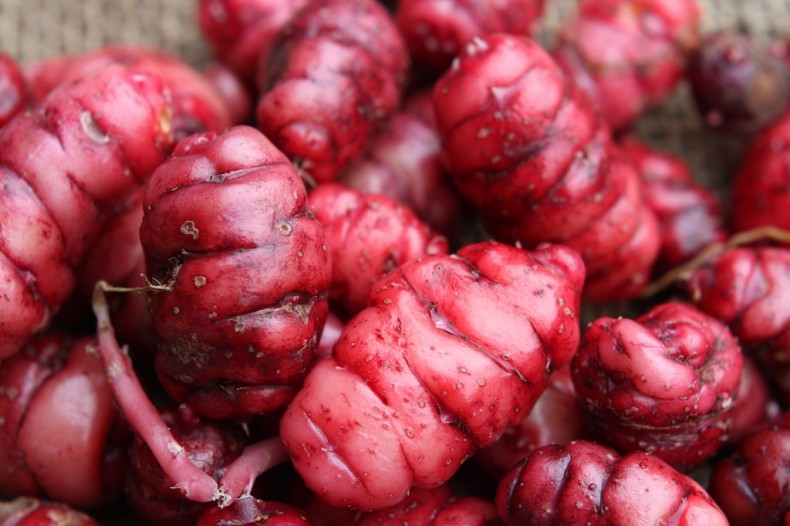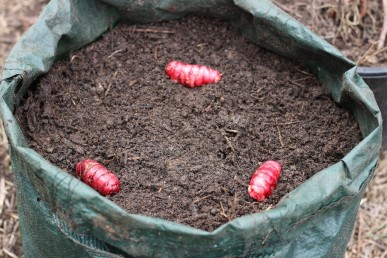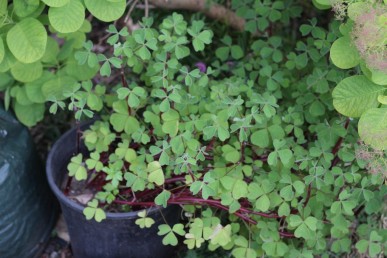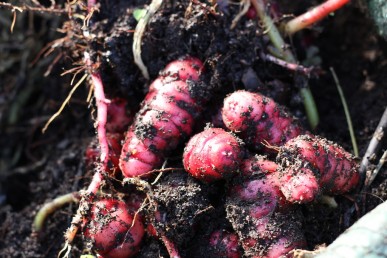Article and photos by Penny Woodward
Oca (Oxalis tuberosum), is also know as New Zealand Yam. Around this time of year you will begin to see them in lists from seed suppliers (although they are not grown from seed but from their tubers) and you might want to think about buying some to grow. You can get types that are any colour from a creamy pink right through to bright magenta and purple. In Australia we don’t yet have distinct cultivars available (as in the US and UK), but they all taste good so it doesn’t really matter. I grow a bright magenta coloured type that looks good combined with other foods and just lifts your spirits when you harvest them.
In the July 4th 2013 issue of Nature Cornell University plant geneticist Susan McCouch commented ‘With fewer than a dozen flowering plants out of 300,000 species accounting for 80 percent of humanity’s caloric intake, people need to tap unused plants to feed the world in the near future’. Maybe oca, a native of the Andes in South America, could be one of those plants?
Plant oca in frost-free areas any time from July to October, if frost is a problem then wait until September or October. Bury the tuber under two to three centimetres of soil with about 20 cm between plants. Its a good idea to dig some compost or well-rotted manure into the soil before planting, but don’t overdo it as too much fertiliser will give you lots of leaves and very few tubers. Make sure you mark where you have planted your oca at least until you are familiar with the leaf, otherwise once the leaves appear you may assume they are the weedy oxalis and pull them out before you remember that this is where you put the oca! The leaves form a dense clump of typical oxalis foliage becoming more prolific through spring and summer. The stems may flop and spread, if you have room then put soil over the top of some to enourage more roots and so more tubers. You need to feed with fish emulsion or some blood and bone sprinkled on the surface every couple of months, but ease off in Autumn, and make sure they are well watered during hot and dry conditions.
The bulbs swell and form as we approach the shortest day, so the longer you can leave them in the better. Once the whole plant has died back, or frost has killed it, the tubers are ready to be harvested. When first harvested they have a lemony flavour that is caused by the presence of oxalic acid. If this is too strong for you or if you have problems with oxalic acid (it can aggravate arthritis and related ailments) then leave the tubers out in direct light for a few days and the oxalic acid will be broken down by sunlight. Storage is easy because, unlike potatoes, tubers do not turn green on exposure to light. Wash and store them in hessian or cotton sacks, or piled into pots or plastic trays out of direct light in a dry airy position.
One drawback of these plants is that they need to be in the ground for a long time. For this reason and because I never have enough garden space, I grow them in pots. I have found the the 45L grow bags are the perfect size to produce a decent crop. Plant 3-4 tubers per pot.
Ocas are relatively pest and disease free. Young leaves will occasionally attract aphids but these are easily squashed or killed with a soap spray.
The tubers can be cooked like new potatoes, added to soups or eaten raw chopped, sliced or grated into salads and sandwiches. They can also be baked or fried. Leaves can also be eaten and have a delicious sharp lemony flavour. Add them to salads.




